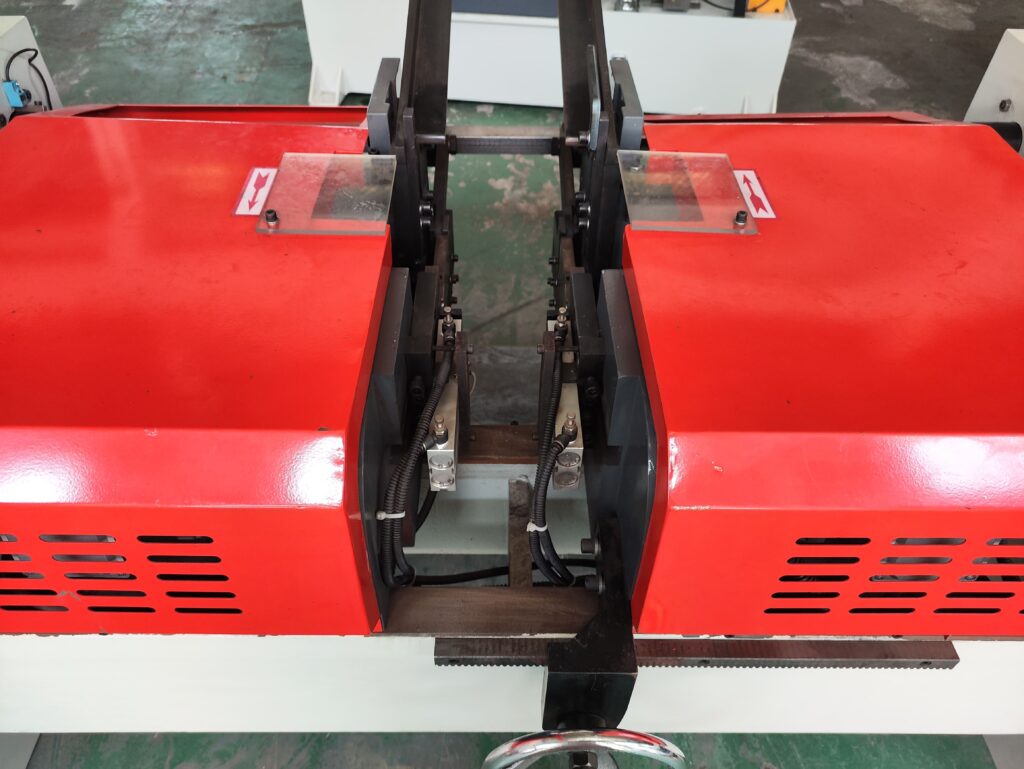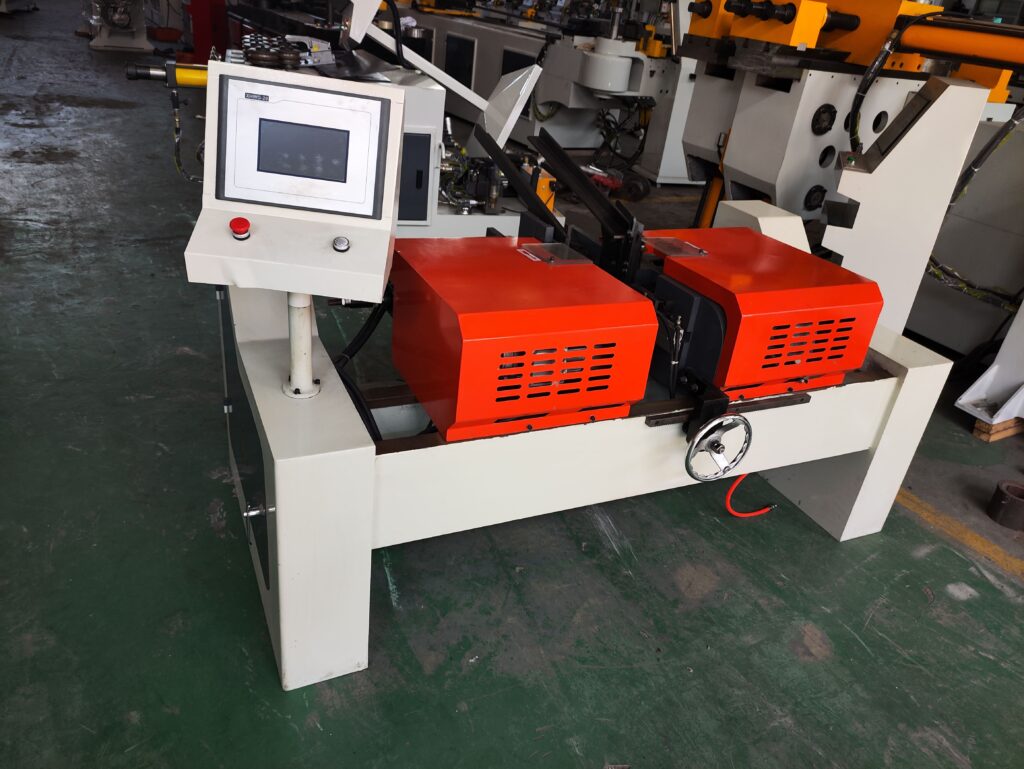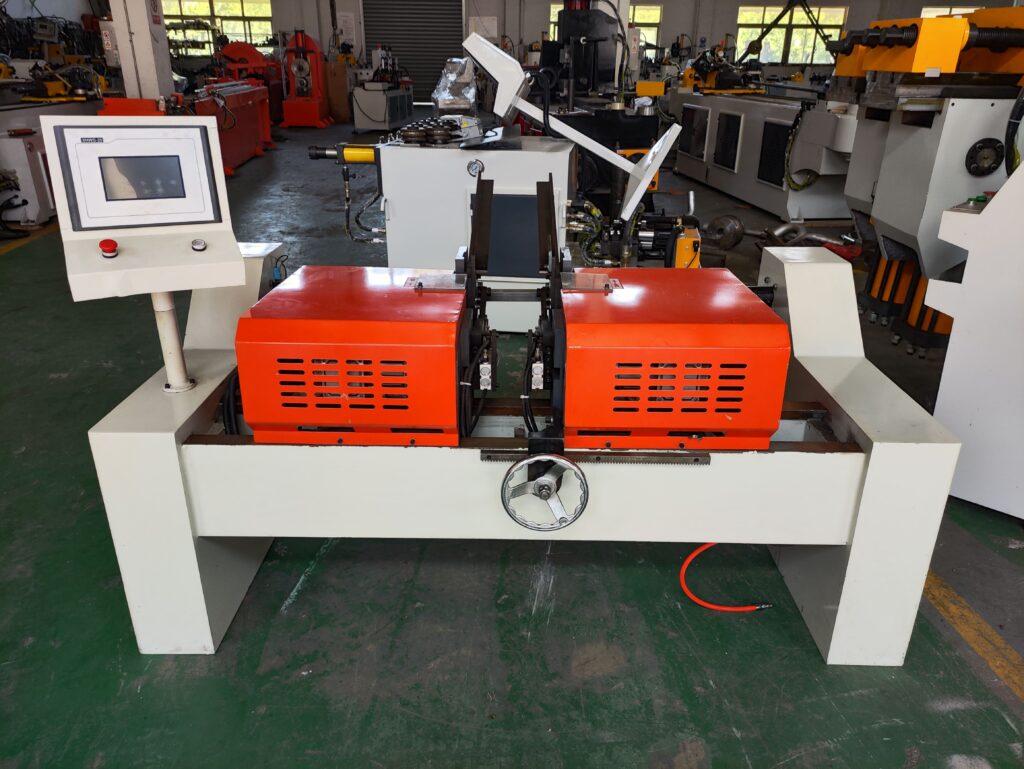A Comprehensive Guide to Enhancing Pipe Connections
The world of industrial manufacturing thrives on precision and efficiency. One crucial aspect of ensuring both is pipe chamfering, a process that prepares pipe ends for seamless and strong connections. This is where the pipe chamfering machine comes into play, a vital tool that simplifies and streamlines this critical step.
What is Pipe Chamfering?
Before diving into the intricacies of pipe chamfering machines, let’s understand the fundamental concept of pipe chamfering. Imagine a pipe with a sharp, uneven edge. This edge can cause several problems:
- Difficult and uneven welding: The sharp edge can hinder smooth welding, potentially leading to weak joints and defects.
- Increased wear and tear: Friction caused by the sharp edge can accelerate wear and tear on tools and machinery during installation.
- Safety hazards: The sharp edge poses a risk of injury to workers handling the pipe.
Pipe chamfering addresses these issues by removing the sharp edge and creating a smooth, beveled surface. This bevel allows for:
- Improved welding quality: The smooth surface ensures a better weld penetration, resulting in stronger and more durable connections.
- Reduced wear and tear: The chamfered edge minimizes friction, prolonging the life of tools and machinery.
- Enhanced safety: The rounded edge eliminates the risk of injuries during handling.
Understanding the Importance of a Pipe Chamfering Machine
Manually chamfering pipes can be time-consuming, labor-intensive, and prone to inconsistencies. Enter the pipe chamfering machine, a specialized tool designed to automate and optimize the chamfering process. These machines offer several advantages:
- Increased Efficiency: Automate the process, saving time and labor costs.
- Consistent Quality: Ensure uniform chamfers, eliminating inconsistencies and potential defects.
- Improved Safety: Reduce the risk of operator injury by minimizing manual handling.
- Enhanced Productivity: Streamline the process, leading to increased overall productivity.

Types of Pipe Chamfering Machines: A Detailed Overview
Pipe chamfering machines come in various forms, each tailored to specific needs and applications. Let’s delve into the most common types:
1. Portable the Machines:
- Design: Compact and lightweight, making them highly portable and ideal for on-site applications.
- Operation: Often powered by pneumatic or electric motors, providing flexibility in various environments.
- Applications: Suitable for small-scale projects, repairs, and maintenance.
- Advantages: Easy to transport, convenient for confined spaces, and cost-effective.
- Limitations: May have limited chamfering capacity and precision compared to stationary machines.
2. Stationary the Machines:
- Design: Larger and heavier, typically mounted on a sturdy base for stability.
- Operation: Usually powered by electric motors, offering higher power and precision.
- Applications: Ideal for industrial settings with high volume production and demanding quality requirements.
- Advantages: Higher chamfering capacity, increased precision, and enhanced durability.
- Limitations: Less portable than portable machines, requiring dedicated space and setup.
3. Automatic Pipe Chamfering Machines:
- Design: Highly automated, incorporating advanced features like automatic feed and chamfer depth control.
- Operation: Powered by electric motors and controlled by programmable logic controllers (PLCs).
- Applications: Suitable for high-volume production lines where consistency and efficiency are paramount.
- Advantages: Unparalleled precision, high throughput, and minimal operator intervention.
- Limitations: Higher initial investment cost, may require specialized training for operation.
4. CNC Pipe Chamfering Machines:
- Design: Combine the accuracy of CNC technology with the power of pipe chamfering machines.
- Operation: Controlled by computer numerical control (CNC) systems, offering precise control over the chamfering process.
- Applications: Ideal for complex chamfering profiles, intricate designs, and high-tolerance applications.
- Advantages: Exceptional precision, repeatable accuracy, and the ability to handle complex geometries.
- Limitations: High initial investment cost, may require specialized programming skills.
Beyond Basic Chamfering: Exploring Advanced Features
Modern pipe chamfering machines offer advanced features that enhance efficiency, precision, and versatility:
- Automatic feed systems: Enable continuous and consistent feeding of pipes, maximizing production speed.
- Chamfer depth control: Allow for precise control over the chamfer depth, ensuring consistent quality.
- Automatic chamfer angle adjustment: Enable quick and easy adjustment of the chamfer angle to meet specific requirements.
- Multiple chamfering tools: Allow for different chamfering profiles and applications, enhancing versatility.
- Integrated deburring capabilities: Eliminate burrs and sharp edges, further enhancing safety and welding quality.
- Data logging and monitoring: Provide real-time data on production parameters, aiding in process optimization and quality control.
Applications of Pipe Chamfering Machines: A Wide Range of Industries
Pipe chamfering machines find applications across a wide array of industries, contributing to efficiency, safety, and quality in various processes:
- Construction: Chamfering pipes for plumbing, HVAC, and structural applications.
- Oil and gas: Preparing pipelines for welding and installation in offshore and onshore projects.
- Manufacturing: Chamfering pipes for various industrial equipment and machinery.
- Aerospace: Chamfering pipes for aircraft and spacecraft construction.
- Automotive: Chamfering pipes for automotive components and assemblies.
- Power generation: Chamfering pipes for power plants and energy infrastructure.

Learn More:Research on Feed System of Phi630 Steel Pipe Chamfering Machine




